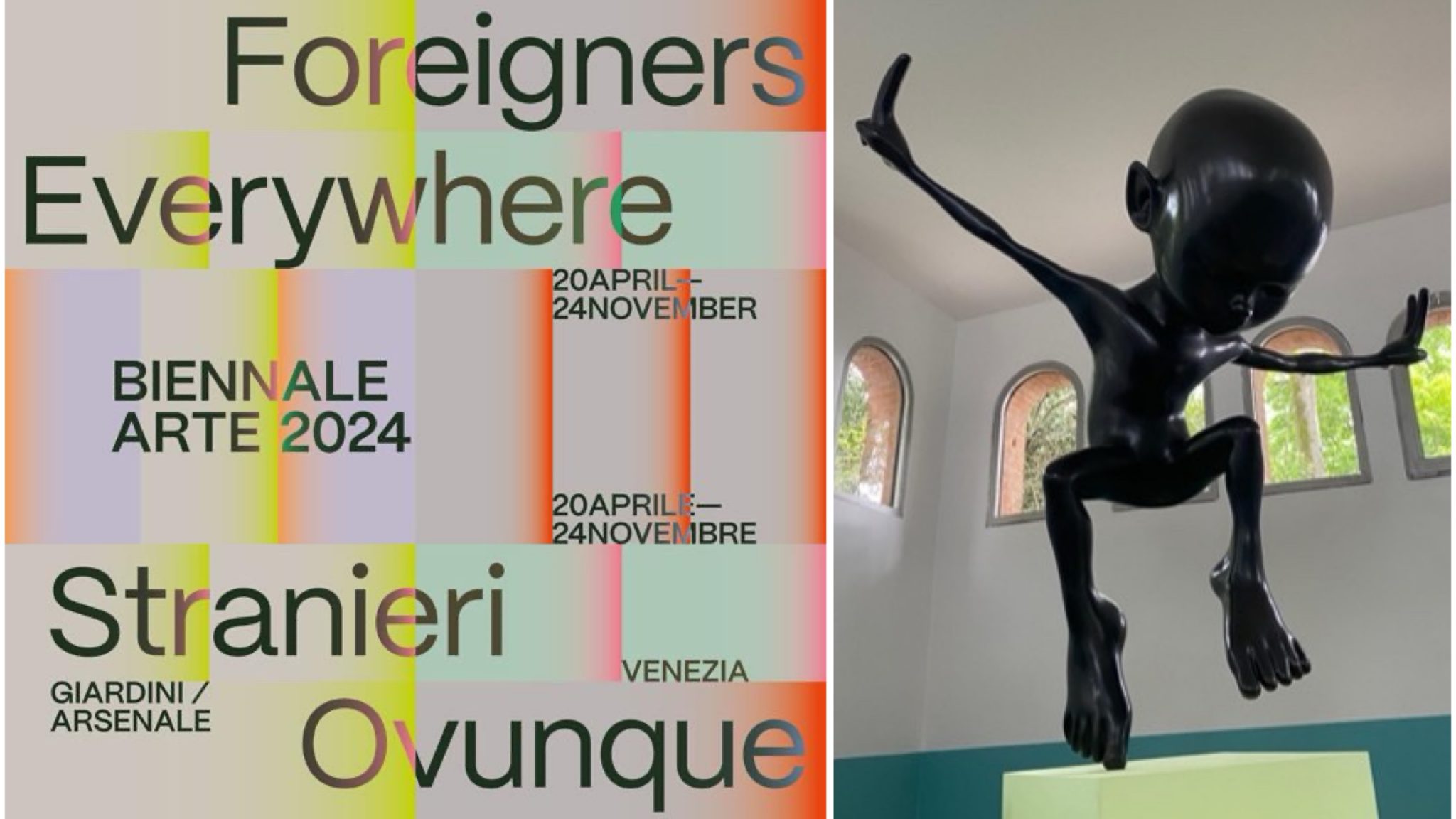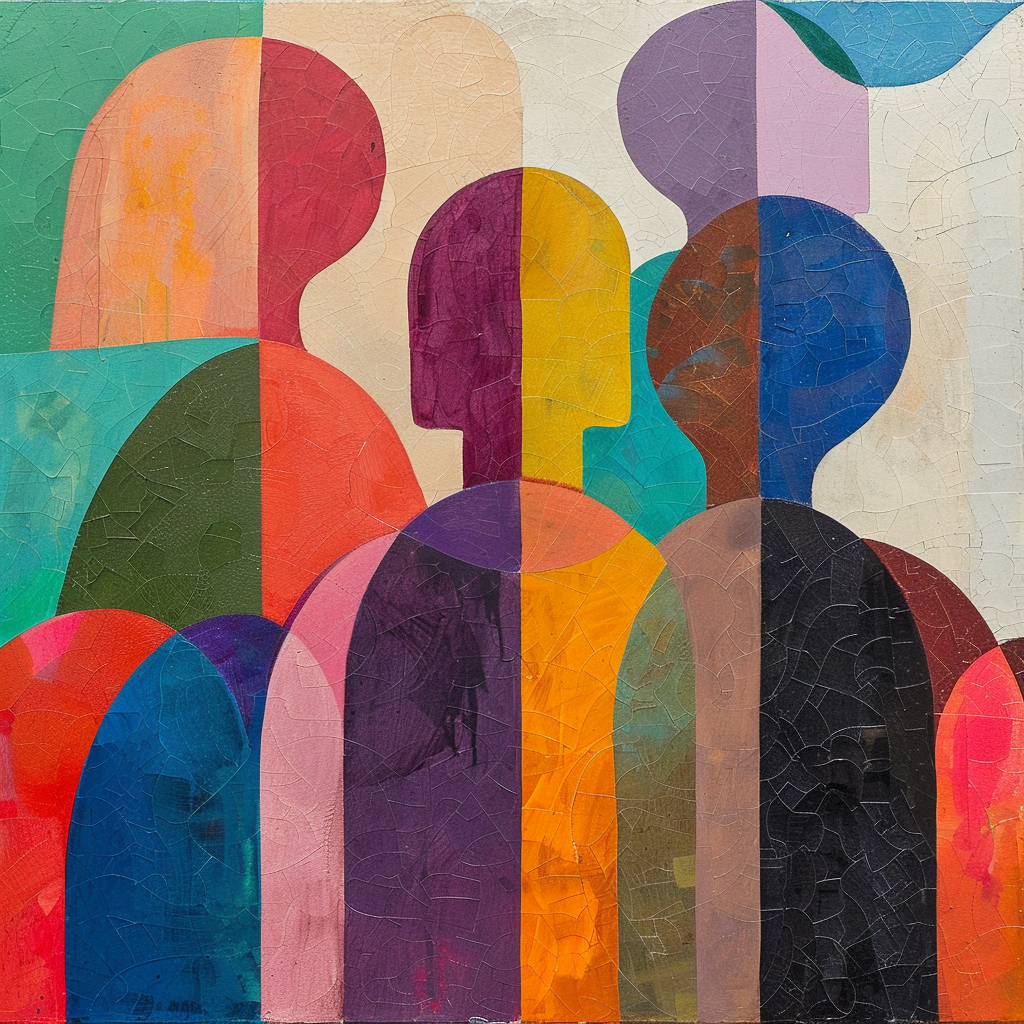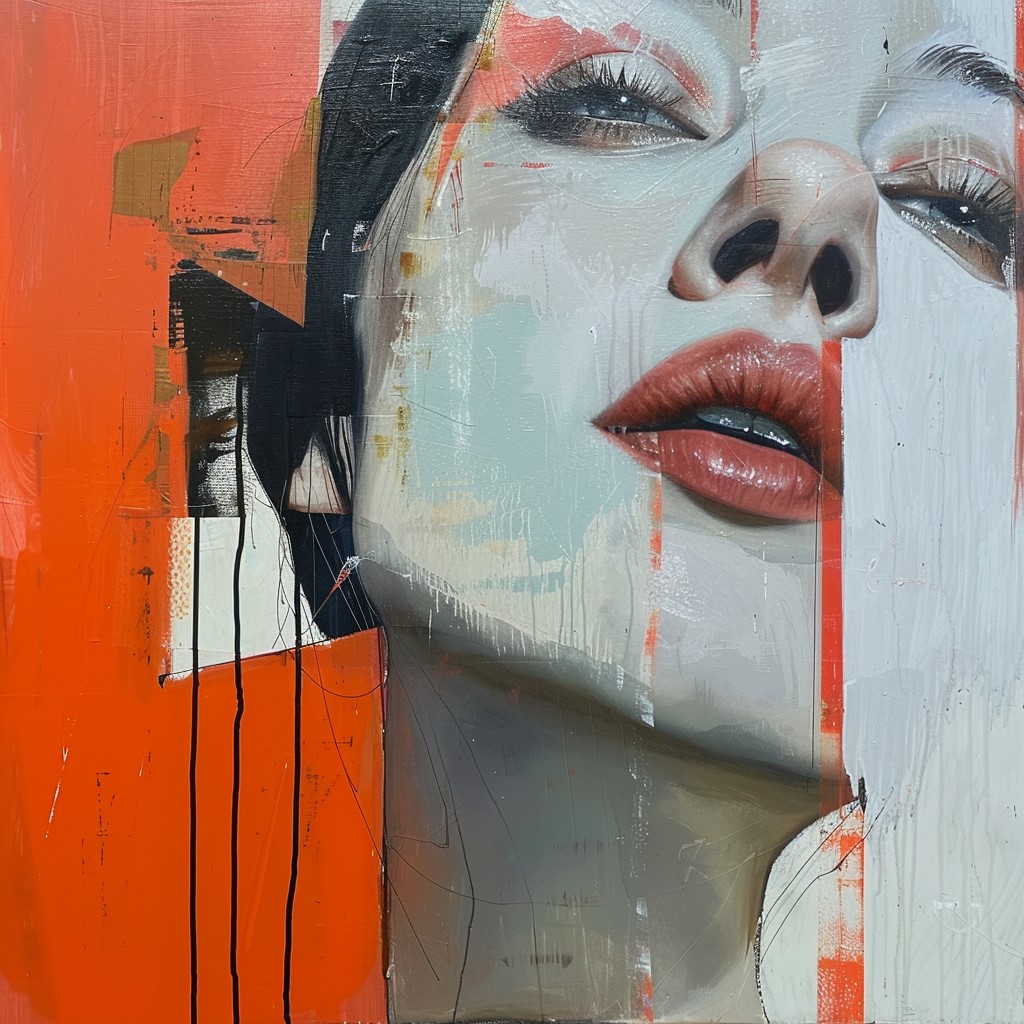Alongside the main event at the Giardini and Arsenale, galleries, private foundations, and artists take advantage of the mega art event to present both group and solo shows throughout the city. Avvy has researched the history of the Art Biennale for you, as well as highlights in Venice beyond the usual routes.

When I look at the Instagram stories of my friends these days, I see gondolas and water taxis everywhere against the stunning backdrop of the famous lagoon city of Venice. It’s the magical place where the entire art world flocks to the Art Biennale these days. Those who arrive during the preview days are either an important artist, curator, or a heavyweight collector usually accompanied by their gallerist. It is the ultimate showcase – a venue of the best art has to offer and also a “bonfire of vanities” as Tom Wolf would describe it. So when artists, critics, and art lovers meet in Venice every two years, it’s not just about seeing great art, but also about being seen at fabulous parties on the rooftop terrace of one of the hotels on the Grand Canal.
I have been there many times but this year I will go in the fall when the hype and the temperatures have cooled down a bit. By then, I will also have read everything that has been written about it, which provides a bit of an overview with at least 300 exhibiting artists at the Gardini and Arsenale, hundreds of off-site venues, not to mention the art panorama of the city of Venice itself. Therefore, I am doing a little advance research in my own interest and can recommend to everyone reading this, to book their flights and hotels soon. There are also great Avvy recommendations as editors’ picks. Since Venice is a total cultural event that you want to experience in all its abundance and panorama, you need above all two things – good footwear and time. Ideally, a visit to Venice includes a trip to the Lido’s beach resort, the Guggenheim Collection, a drink at the Hotel Chipriani, and many unique churches. Just strolling and getting lost in the alleys of Venice takes a lot of time because you often get lost. Venice is also a city that is on the verge of suffocation under the weight of mass Asian tourism, and the Italian government has just caused, as of April 25, 2024, that day tourists must pay a fee of 5 euros.
The 60th Venice Biennale goes into its 130th year in 2024 and has taken place (with a few interruptions) since 1895 biennially. It occurs in difficult and politically charged times, which is also reflected in the provocative title “Stranieri Ovunque – Foreigners Everywhere.” Artists have always dealt with the social, political, and cultural issues of their time and processed these in their works. This is what the Biennale is known and famous for. But I would like to take a brief look back at the beginnings.
In the summer of 1895, the first Venice Biennale opened its doors and immediately set new standards for the international art world. What was planned as a cultural highlight ignited a significant scandal on opening day, which was to make the Biennale famous. The Biennale was created to counteract the cultural and economic doldrums that Venice had been experiencing for years. The idea was to create an exhibition that would take place every two years to attract artists and art lovers from all over the world. This first exhibition featured works from almost all European countries and the USA.
But what was the scandal? The object of the most vehement controversies was a painting by the then 35-year-old Italian artist Giacomo Grosso. The work titled “Il supremo convegno” (The Supreme Gathering) depicted a group of six youths in an explicit and provocative pose representing a satanic orgy, and it was clear that the figures were the descendants of wealthy North Italian bourgeois families from Turin. Even before the opening of the Biennale, pictures and descriptions of Grosso’s painting had been published in various magazines, causing nationwide excitement. The explicit representation and the alleged defamation of respected families by the recognizable portraits of their children in compromising positions led to public debates about the limits of artistic freedom and good taste. On the opening day, long lines formed in front of the exhibition palace, and most of the 224,327 visitors came specifically to see this one picture. The reactions ranged from shock to fascination. The discussions about the painting overshadowed almost all other exhibits and posed an unexpected challenge to the organizers, who were not prepared for the crowds that came for it. Despite, or perhaps because of, the scandal, “Il supremo convegno” became by far the public’s favorite of the Biennale and was then supposed to go on a world tour. However, these plans were thwarted when the painting was destroyed in a fire that was never fully explained before its first stop. The scandal associated with the painting helped the Venice Biennale gain initial fame that established it in Europe’s cultural calendar.
The current edition of the 60th Venice Biennale in 2024, to which over 300 artists are invited, is a kaleidoscope of the contemporary art scene, even though in many parallel exhibitions the art of other epochs is also celebrated.
Every time the Venice Biennale opens its doors, an intense competition ensues for one of the most coveted awards in the art world: the Golden Lion for the best national pavilion. This prize is not just a high recognition for the artists and curators of the winning pavilion but also a prestige object for the countries represented. The history of the Golden Lion is full of dramatic competitions, political undertones, and artistic feats of genius. The awarding of the Golden Lion can significantly influence a country’s art scene and is often associated with a noticeable increase in cultural investments. A victory here is seen as confirmation of artistic excellence and visionary curation and has the potential to shape a country’s cultural identity on the global stage.
One of the most memorable examples of the influence of the Golden Lion was the victory of the German pavilion in 2001. Gregor Schneider’s unsettling installation “Totes Haus u r” quickly became the talk of the Biennale and internationally. The installation in the German Pavilion, which eerily replicated the interior of a house, was as controversial as it was fascinating and was interpreted as a comment on the darker sides of human existence. The competition for the Golden Lion is also a game of diplomacy and strategy. Countries invest heavily in their pavilions to attract the best possible artists and curators. The decision of who to represent is often the result of intense discussions and sometimes national debates.
This year’s Biennale is titled “Foreigners Everywhere” and focuses on topics such as migration, minorities, and the global south. It is characterized by its pronounced political dimension. In the German pavilion, presented by artists Yael Bartana and Ersan Mondtag under the curatorial direction of Çağla Ilk, which was shielded externally by large mounds of sand, two impressive theatrical performances took place simultaneously. The intense acoustics were reminiscent of simultaneous performances of Mahler’s and Bruckner’s symphonies – an artistic clash that captivated the audience.
Adriano Pedrosa, the Brazilian curator of the main exhibition, has deliberately chosen the motto. It reflects not only the physical mobility through tourism and migration but also the social mobility and visibility of minorities. The Biennale also raises questions about the role and influence of art in today’s globalized world. While some artists explore classic themes in modern contexts, others use the platform to point out social injustices and cultural conflicts. However, the discussions and artworks of this year invite us to reflect on the current global changes and their representation in art. Besides the central exhibitions in the “Giardini,” where the national pavilions are presented, and in the area “Arsenale,” there are numerous parallel events and satellite exhibitions that transform the city into a vibrant art landscape.
A trip to Venice should not be limited to the highlights of the Art Biennale in the Giardini and Arsenale. Venice is a bursting cultural hub that kaleidoscopically spans centuries of art and cultural history. Venice, a city built on more than 100 small islands, has played a central role in art history for centuries. During the Renaissance, Venice became one of the most important artistic centers in Europe. Painters like Titian, Tintoretto, and Veronese shaped the Venetian style, characterized by luminous colors and dramatic, often emotional depictions. These artists not only influenced the art of their time but set standards that were admired and imitated throughout Europe. The architecture of Venice is also of great art historical significance. St. Mark’s Basilica, with its Byzantine mosaics, and the magnificent palaces along the Grand Canal reflect the wealth and power of Venice in its heyday, an architectural gem.
Here are a few of the highlights that you shouldn’t miss during a visit to Venice in 2024.
- The Palazzo Grassi and Punta della Dogana are hosting two remarkable exhibitions. The Pinault Collection shows works by Pierre Huyghe at Punta della Dogana and by Julie Mehretu at Palazzo Grassi.
- The Galleria dell’Accademia has just opened the exhibition “Willem de Kooning e l’Italia.” This significant exhibition runs until September 15, 2024. The exhibition explores the influence that de Kooning’s two stays in Italy – in 1959 and 1969 – had on his work.
- The Peggy Guggenheim Collection is presenting “Marina Apollonio: Beyond the Circle,” showcasing the works of Marina Apollonio and her dynamic and immersive kinetic installations.
- Insider tips like the Scuola di San Giorgio degli Schiavoni are a must-see. This less-known gem houses some of the most beautiful frescoes by Vittore Carpaccio, offering a deep insight into Venetian Renaissance art, away from the usual tourist streams. A visit to the small church is a must for any of my visits.
- The Oratorio dei Crociferi is a small, often overlooked space near Fondamenta Nuove. The oratory houses impressive paintings by Palma il Giovane, which can be viewed in an intimate setting.
Anyone who would like to delve deeper into the turbulent history of the Venice Art Biennale should consider the fascinating book by the art historian and curator Robert Fleck. It is a successful analysis of the Venice Biennale, skilfully intertwining the numerous episodes that have shaped this event. The Biennale is not only seen as an art event but as a reflection of the social, political, and cultural dynamics of its time. Fleck takes us on a journey through the decades, starting with Gustav Klimt, who radically transformed a dark, ornate hall into a bright, white-painted space with skylights in 1910, thus laying the foundation for the concept of the “White Cube.” He reports on the early challenges of Picasso, whose works initially fell victim to censorship, and the surprising failures of artists like Klee, Ernst, Dix, Grosz, and Kandinsky, who flopped with both critics and the public in 1930. A special focus is on the political instrumentalizations of the Biennale, such as under Mussolini, who used the event to propagate his vision of a Renaissance of the Roman Empire. Adolf Hitler, a failed artist who visited the Biennale a year after his rise to power, showed interest only in the German pavilion and despised the rest. The book also highlights outstanding moments, such as Peggy Guggenheim’s triumphant post-war exhibition, which contributed significantly to the recognition of modern art. In 1964, Robert Rauschenberg’s groundbreaking exhibition changed the face of the Biennale by replacing the old guard of Paris salon artists with a new generation of New Yorkers. Harald Szeemann’s curation of the “Aperto” exhibition in 1980 is celebrated as the birth of Postmodernism.












